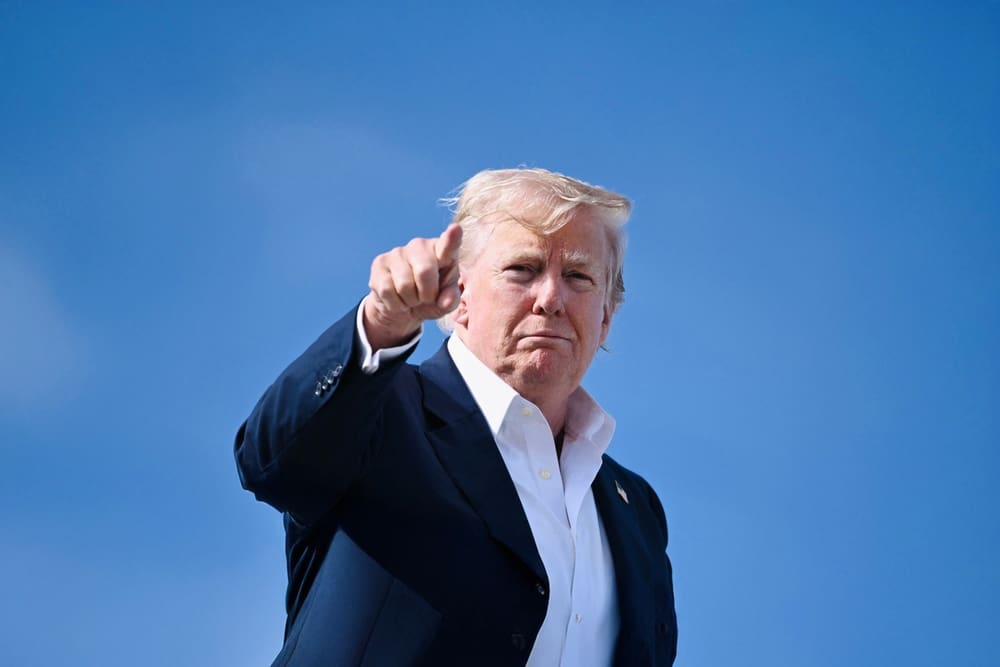Executive Summary
- U.S. consumer prices advanced 0.4% in August, pushing the annual inflation rate to 2.9%, the highest since January.
- Economists linked rising consumer costs, especially in essential goods like food and gas, to President Donald Trump’s policies, including extensive tariffs and mass deportations.
- Financial markets opened higher following the inflation data, with traders largely anticipating a 95% probability of a quarter-point Federal Reserve interest rate cut next week.
The Story So Far
- U.S. consumer prices have accelerated, with the annual inflation rate reaching its highest since January, driven by increasing costs for essential goods. This inflationary pressure is largely attributed by economists to President Donald Trump’s policies, particularly his sweeping tariffs, which are causing businesses to pass on higher expenses to consumers, alongside factors like labor shortages impacting food prices.
Why This Matters
- The acceleration of U.S. consumer prices to 2.9% in August, the highest since January, signals a tangible increase in the cost of essential goods for Americans, with economists directly linking some of these rising expenses to President Trump’s tariffs and other policy decisions, even as financial markets broadly anticipate a Federal Reserve interest rate cut next week.
Who Thinks What?
- Many economists link the rising consumer costs and acceleration of price hikes to President Donald Trump’s policies, such as sweeping tariffs, noting that businesses are passing these increased costs on to consumers.
- Economist Dean Baker attributes the significant increase in fresh fruit and vegetable prices to “mass deportations and tariffs,” which he suggests are leading to labor shortages and crops rotting in fields.
- Financial markets reacted with gains to the inflation data, and traders largely anticipate a 95% probability that the Federal Reserve will implement a quarter-point interest rate cut at its upcoming policy meeting.
U.S. consumer prices advanced by 0.4% in August, pushing the annual inflation rate to 2.9%, the highest since January, according to Bureau of Labor Statistics data released Thursday. This acceleration from July’s 2.7% increase has driven up the cost of essential goods for Americans, with economists linking some of these rising consumer costs to President Donald Trump’s policies, such as sweeping tariffs.
Inflationary Pressures Mount
The latest Consumer Price Index (CPI) report provided further indications that expenses resulting from President Trump’s policies, including extensive tariffs, are being transferred to consumers. Economists had largely anticipated an acceleration in price hikes for August as a broader range of businesses passed on the increased costs associated with these tariffs.
Several key categories saw significant price increases. Food at home prices rose 0.6% in August, marking the highest monthly jump in nearly three years. Similarly, gas prices climbed by 1.9% after experiencing a 2.2% decrease the previous month.
Economist Dean Baker, co-founder of the Center for Economic and Policy Research, noted a striking 2% increase in fresh fruits and vegetables within one month. Speaking to CNN, Baker attributed this rise to “mass deportations and tariffs,” suggesting that producers are facing labor shortages leading to crops rotting in fields.
Core Inflation and Housing Trends
The housing-related shelter category, which holds the heaviest weight in the CPI, was a leading contributor to August’s monthly increase. However, on an annual basis, shelter inflation continued its deceleration from pandemic-era highs, reaching 3.6%, its lowest rate in nearly four years.
Excluding the volatile food and energy sectors, the closely watched core CPI index rose 0.3% on a monthly basis, indicating a slight acceleration in pace. Despite this monthly uptick, the core CPI remained steady at 3.1% for the 12 months ending in August.
Market Reaction and Federal Reserve Outlook
Financial markets opened higher on Thursday following the inflation data. The Dow Jones Industrial Average rose by 159 points, or 0.35%, while the broader S&P 500 gained 0.36%, and the tech-heavy Nasdaq increased by 0.39%.
Traders continue to largely price in a 95% probability that the Federal Reserve will implement a quarter-point cut to its benchmark interest rate at its policy meeting scheduled for next week. There is a 5% chance of a more substantial half-point cut being considered.
The August inflation data indicates a continued upward trajectory in consumer prices, driven by increases in essential goods and services, with economists highlighting the impact of specific policy decisions. As these economic indicators evolve, attention remains focused on the Federal Reserve’s upcoming policy decisions regarding interest rates.








